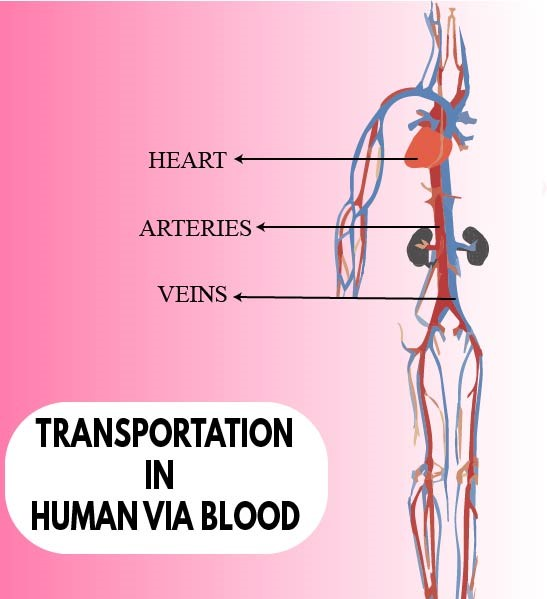
What is true about vein?
(a) All veins carry deoxygenated blood
(b) All veins carry oxygenated blood
(c) They carry blood from organ towards the heart
(d) They carry blood from the heart towards the organs.
Answer
563.7k+ views
Hint: It is an elastic blood vessel that transports blood from various regions of the body to the heart. It is composed of the cardiovascular system, which circulates blood to provide nutrients to the cells of the body. Its size varies from 1 millimeter to 1-1.5 centimeters in diameter.
Complete answer:
Veins are the blood vessels that conduct blood from different body parts back to the heart. All veins are carried deoxygenated blood except the pulmonary vein which carries oxygenated blood from the lungs to the left atrium of the heart. Small vessels are called venules that continue from capillaries, merge to form veins, and drain the blood from capillaries into veins.
Additional Information: Veins serve a critical function within our bodies. When blood has been pumped by the heart to various parts of the body, it must return to the heart. Veins are the return portion of a round-trip plane ticket, in a metaphorical sense. The veins are responsible for delivering the blood, now bluish, back to the right atrium (chamber) of our heart. Blood will collect more oxygen and prepare to be pumped back out through arteries in the heart. This is a cycle that continues as long as a person is living.
Veins can vary greatly in size. The largest vein in the body is known as vena cava, and in Latin word which means 'hollow vein.' There are typically two sections of the vena cava, one below the heart and one above it.
So, the correct answer is ‘They carry blood from organs towards the heart’.
Note: A major problem that will occur in veins is basically the result of a blockage or defect. Due to blood clots, the blockage has occurred in either superficial veins or deep veins, most often in the legs or arms. Blood clot formation and vein swelling in superficial veins is known as superficial thrombophlebitis.

Complete answer:
Veins are the blood vessels that conduct blood from different body parts back to the heart. All veins are carried deoxygenated blood except the pulmonary vein which carries oxygenated blood from the lungs to the left atrium of the heart. Small vessels are called venules that continue from capillaries, merge to form veins, and drain the blood from capillaries into veins.
Additional Information: Veins serve a critical function within our bodies. When blood has been pumped by the heart to various parts of the body, it must return to the heart. Veins are the return portion of a round-trip plane ticket, in a metaphorical sense. The veins are responsible for delivering the blood, now bluish, back to the right atrium (chamber) of our heart. Blood will collect more oxygen and prepare to be pumped back out through arteries in the heart. This is a cycle that continues as long as a person is living.
Veins can vary greatly in size. The largest vein in the body is known as vena cava, and in Latin word which means 'hollow vein.' There are typically two sections of the vena cava, one below the heart and one above it.
So, the correct answer is ‘They carry blood from organs towards the heart’.
Note: A major problem that will occur in veins is basically the result of a blockage or defect. Due to blood clots, the blockage has occurred in either superficial veins or deep veins, most often in the legs or arms. Blood clot formation and vein swelling in superficial veins is known as superficial thrombophlebitis.

Recently Updated Pages
Master Class 11 Social Science: Engaging Questions & Answers for Success

Master Class 11 Physics: Engaging Questions & Answers for Success

Master Class 11 Maths: Engaging Questions & Answers for Success

Master Class 11 Economics: Engaging Questions & Answers for Success

Master Class 11 Computer Science: Engaging Questions & Answers for Success

Master Class 11 Chemistry: Engaging Questions & Answers for Success

Trending doubts
What is meant by exothermic and endothermic reactions class 11 chemistry CBSE

10 examples of friction in our daily life

One Metric ton is equal to kg A 10000 B 1000 C 100 class 11 physics CBSE

Difference Between Prokaryotic Cells and Eukaryotic Cells

1 Quintal is equal to a 110 kg b 10 kg c 100kg d 1000 class 11 physics CBSE

Draw a diagram of nephron and explain its structur class 11 biology CBSE




